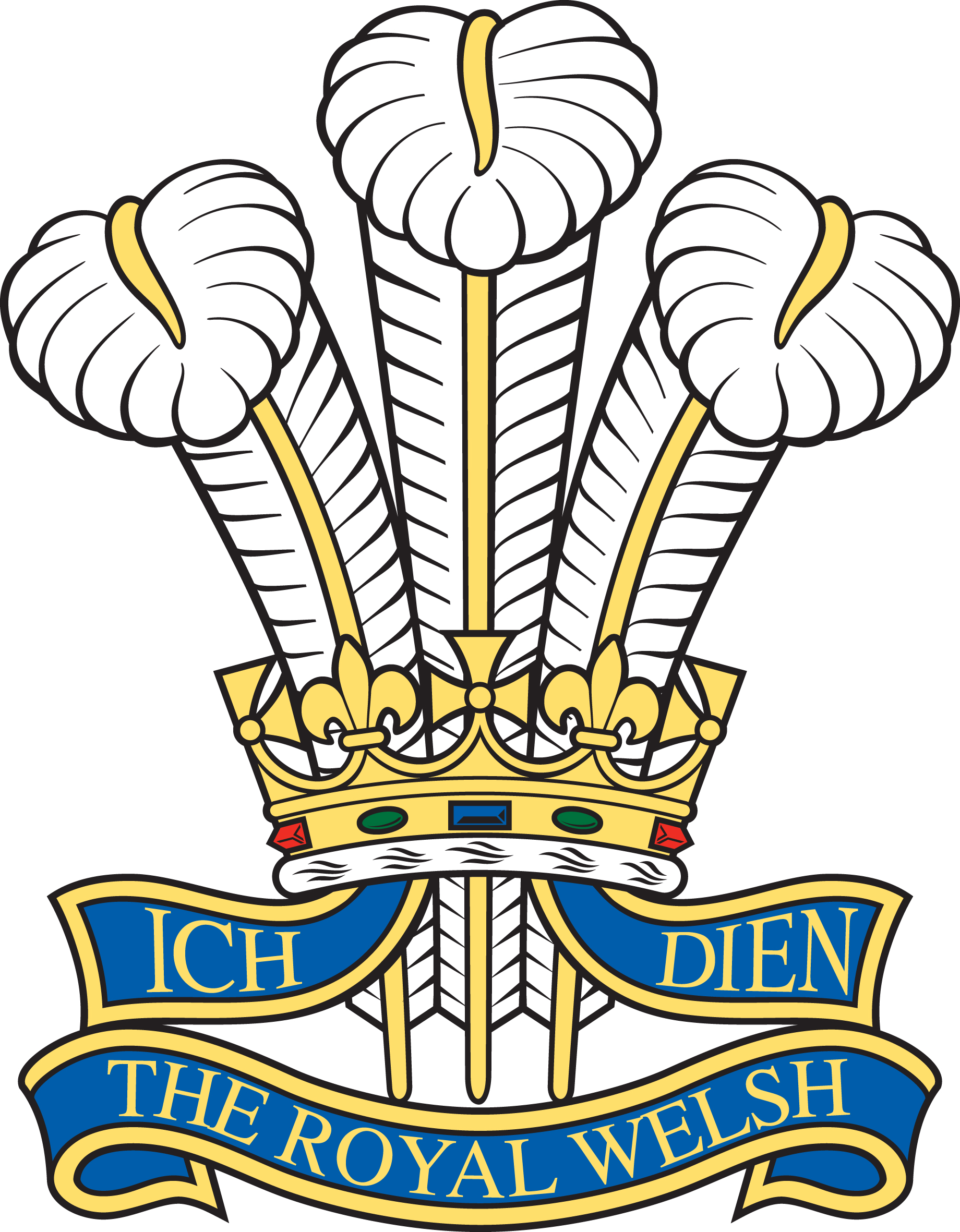Learn to draw cartoons with Karl Dixon, professional cartoonist since 1993! During this cartoon drawing…

Joseph Evans and Edward Davis: A letter brings two collections together
Our team at the museum are always exploring and researching items in our collection. A tragic letter sent home from the front lines was the start to this particular research and would link two collections together.
14654 Corporal Joseph Evans
Within the museum’s archive, we have a series of letters from Corporal Joseph Evans which he sent home to his family.
Joseph Gwyn Evans was born in Cardiff in 1884. By the time of the 1911 census, he was a miner working in Bridgend, and was living with his wife, Hannah, and his children Charles Edward (born 1909) and Violet Irene (born 1907).
He joined the army in September 1914, and, with the 1st battalion of the South Wales Borderers arrived in France in November of that year. He saw action at Givenchy, Festubert and Neuve Chappelle in early 2015, and was with the battalion preparing for the attack against the Germans at Rue du Bois, near Ypres, in May 1915.
Before heading to the trenches, Cpl Evans sent a telegram home to Swansea, where his wife and children had settled, simply saying: “Off to the front letter to follow J”.

Tragically, by the time the ‘letter to follow’ arrived with his wife, Cpl Evans had been killed in the action that took place on May 9, 1915. An extract from his letter reads:
“My dear wife,
Just a line, we are about to make a big attack on the enemy’s position… I hardly know how to address this letter to you as it may be my last…It is going to be the most terrible bombardment in the world’s history… Kiss my dear children for me and if I fall tell them I fell in a glorious cause for the women and little children of Northern France and Belgium. If this is to be my farewell letter goodbye my dear wife and children…”

A Photo of a Boy
The soldier (unknown) who recovered Cpl Evans’ body found a photograph of a little boy in a pocket, he kept the photograph in the hope of uniting it with the family but, was killed himself shortly afterwards. The photograph ended up being sent to the second soldier’s widow, along with his effects.
The photograph was eventually sent to Jack Lewis’ Photographic Studio in Swansea, as his name was stamped on the back, and a newspaper appeal was launched to find out who the boy was.
The little boy turned out to be Charles Edward Evans, the six-year-old son of Cpl Evans.

Cpl Joseph Evans is remembered on the Le Touret War Memorial in Le Touret Military Cemetery, Richebourg-L’Avoue in France. His original burial place was badly damaged later in the war and many of the bodies buried there, including his, were never found.
11450 Sergeant Edward Davies
Additional to the letters written by Cpl Evans, there are letters from a Lance Corporal (later Sergeant) Edward Davis who wrote to Mrs Evans.
After the death of her husband, Mrs Evans also received a letter from Lance Corporal Edward Davies, a close friend and comrade of Cpl Evans’. His letter arrived before any official notification of death and reveals how Evans had wished his friend to write to his wife should he not make it. Davies, who was from Merthyr Tydfil, wrote:
“I wish to tell you that myself and your husband have been firm friends, we went in and out of action together and were like brothers… The big attack came on Sunday May 9th and it was awful, your husband went through the attack until evening when we had to make another, in which we ran into a terrible fire from the enemy.
“Just as we started I looked across to see if he was alright, and I saw him fall, I could not go to him because we were advancing, those coming behind would see to the wounded…”
L/Cpl Davies wrote that Cpl Evans “died doing his duty…” and that he showed “…plenty of courage and was a brave man.”

In another letter, dated June 1915, Davies wrote again to Mrs Evans, thanking her for sending photographs of Evans and their children. He also provided more information about Evans’ death. He wrote:
“I received your letter and postcards of your children and I wish to thank you from the bottom of my heart, I shall send them home to my mother, and if I live through this war, I will be able to look at them in sympathy, and with a fond remembrance of my dear chum – Joe.
“… Richebourg L’Avoue is a village with a road running through it which is called Rue Du Bois, it was on the right of the road, just outside the village, that Joe got killed.
“In the early hours of the morning he was buried in a little orchard on the left of the road… the mound is marked with a small cross…”

Who was Sergeant Davies?
Unfortunately, there was not a lot of information surrounding Cpl Evans’ time in service, however a fair amount is known about Sergt Davies.
Edward Davies was working as a coal miner when he joined the South Wales Borderers on January 8, 1914. He was 21 years old when he travelled to France on November 23rd with the 1st Battalion, and saw action at Givenchy, Festubert and Neuve Chappelle in early 1915. He was promoted to Lance Corporal and took part in the attack against the Germans at Rue du Bois, near Ypres, in May 1915.
Davies fought in the Battle of Loos, (September 25th – October 13th 1915), where he was set to work as a scout behind enemy lines. He was mentioned in Dispatches on February 5, 1916 for “Good scouting at Loos” and was also awarded the Military Medal for his “reconnaissance of German front line trenches and bravery during the Battle of Loos”, London Gazette, September 14, 1916.
After the battle, Davies was appointed Sergeant in Charge of Brigade Scouts and Observers, under the Brigade Intelligence officer. His detachment was comprised of hand-picked men from four different regiments – the South Wales Borderers, Welsh Regiment, Gloucester Regiment and the Munster Fusiliers.
He was awarded a bar to his Military Medal for “reconnaissance under great risk during the Battle of Passchendaele (Ypres sector)”, London Gazette February 23, 1918.
Edward remained in charge of the scouting detachment until he was wounded on the morning of September 27, 1918 at St Quentin. He was sent home to the UK and was admitted for treatment at Nell Lane Military Hospital in Manchester. In April 1919 he was discharged as “permanently disabled”.
Life After Being Discharged
After being discharged from the army, Davies struggled to find work. He had previously been a coal miner, but due to the injury to his right arm, was unable to do physical labour of any sort. According to the Ministry of Pensions, he had left the army with a disability of “6-15%” resulting in a very meagre pay out.
In 1922, he took his grievance to a Pensions Appeal Tribunal, held at the Law Courts in Cardiff, where he argued that his disability was causing him ‘weekly financial loss’.
He wrote on his appeal application: “I am physically unable to return to my pre-war occupation. My arm is deformed and consequently it is with difficulty and pain that I perform my current occupation. I see no hope in an improvement of the condition… therefore I realise I am to be ‘handicapped’ throughout my life…”
The Tribunal overturned the original decision and categorised him as permanently 25% disabled. His pension was increased accordingly.
A Unique Object
While we had letters written by Sergeant Davies, we were curious to know if any other items in the collection may be in the museum. Within our collections management system, we were pleasantly surprised that we did in fact have something of his. It was the x-rays of when he was wounded! Certainly a unique item in our collection which now links two collections and most importantly, two friends.






This Post Has 0 Comments